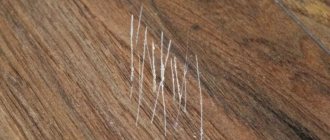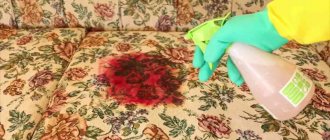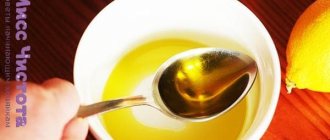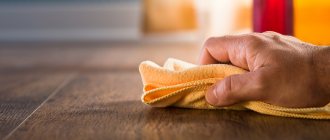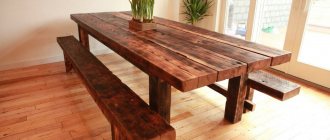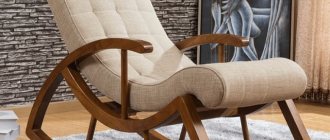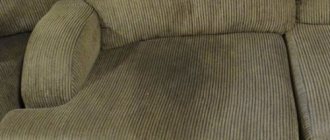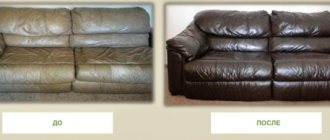Rating of the best products for removing grease from kitchen units, depending on the type of medium
Paying tribute to the folk method of cleaning the kitchen from dirt, it should be recognized that the use of home remedies is not always effective. It may also cause unwanted damage to surfaces.
Among the companies that produce high-quality and effective products for cleaning the house, there are both Russian and foreign manufacturers.
Today, the household chemicals market offers a wide range of different products that will help get rid of dirt from kitchen surfaces made of any materials. These are also special products that are designed for washing certain surfaces, for example, glass, the wooden facade of a kitchen unit or a metal sink. They are also universal, allowing you to clean any surface.
It is important to consider what material the surfaces are made of so as not to harm their appearance.
Using an available Internet resource and spending a little free time, you can make a rating of the most popular kitchen detergents.
Cleaning your kitchen of grease is very easy if you do it right.
List of the best aerosol oil removers
Sprays and aerosols for degreasing and washing kitchen surfaces, depending on the application, are divided into two options:
- Instant action - they are washed off immediately after spraying.
- Long-acting - require some time after application.
This is a real helper in the kitchen, which has proven itself in the fight not only with fat, but also with soot, carbon deposits, and scale.
Aerosols for grease removal, for the most part, are universal products and effectively clean any surface. The advantage of sprays is determined by the following qualities:
- clean perfectly and leave no streaks;
- have an antistatic effect, ensuring high quality dust removal;
- easy to apply by spraying, no need to wash the surface afterwards;
- they contain no abrasives or aggressive elements.
It is used for washing ovens, microwaves, stoves, and dishes.
Here is a list of what to use to clean grease from kitchen furniture:
- Organic People – spray gel for all types of dirt.
- Bagi Shumanit is an effective grease remover.
- BIO-KITCHEN is an eco-spray containing lemongrass essential oil.
- Meine Liebe Anti-grease is a highly effective aerosol for general cleaning of kitchen areas.
Powders and pastes
Powder and paste products effectively deal with old dirt, are able to penetrate deeply into the surface and remove greasy deposits. They are used to clean the oven, gas stove, hood, and soot on the frying pan. But they are absolutely not suitable for washing dishes.
This form of release is the cheapest on the household chemicals market, but also the most risky for health.The smallest particles of powder can linger on the surface even after thorough rinsing. Powders, like aerosols, are universal; they can not only cleanse fat, but also have an antibacterial effect. The following products are popular in this segment:
- Sarma Antibacterial Powder. Cleans any surfaces - earthenware, plastic, enamel, ceramics, glass.
- Biolan “Juicy Lemon” is economical and gentle on the surface.
- Wide Magiclean Kao is a universal powder that can be used in dishwashers.
The best gels for fat removal
Another common means of keeping the kitchen clean are gels. Let's see how to clean grease stains from kitchen furniture using gel-based products. The product is a jelly-like substance and does not require dilution with water.
Typically, gels are used in their pure form, without requiring dilution with water, which improves the effect.
Even a small amount of gel applied to a sponge or soft cloth will effectively remove stains from your furniture and restore its glossy shine, helping to remove any stain. There is no need to wash such a surface after cleaning. Gels do not leave streaks and are equally suitable for plastic, matte coatings, and do not leave scratches on paint.
The gel washes away both fresh dirt and already ingrained stains.
The rating of the best fat removal gels is headed by the following products:
- Synergetic is a high-quality degreaser that does not form excessive foam.
- Anti-grease green tea - the main purpose is to treat household appliances for the kitchen.
- Professional Office Clean is a professional detergent for universal use.
Rating of products for removing grease from kitchen furniture depending on its type
MDF and chipboard
When cleaning a set of MDF or chipboard, choose gentle cleaning products. If you use aggressive abrasives, the delicate surface may be scratched.
The surfaces in question can be cleaned with substances that the housewife always has:
- glass cleaning composition;
- dishwashing gel;
- liquid soap.
If the above remedies do not help, you can use stronger household chemicals. Before using the cleaner, you should familiarize yourself with its composition.
You cannot clean furniture made of chipboard and MDF with the following types of substances:
- liquids containing alcohol;
- abrasive powders;
- concentrated solvents;
- solutions containing a lot of alkalis and acids.
The most popular cleaning products for cabinets made of MDF and chipboard are:
- “Mr. Muscle";
- Cream "Shumanit";
- "Sillit Beng anti-fat."
Natural wood
When cleaning natural wood, be as careful as possible. The material is easy to spoil, and a set made of valuable wood is expensive.
After cleaning, it is advisable to treat the furniture with wax or polish. This way the headset will be protected from dust and soot settling.
When choosing a cleaner for natural wood, make sure that it does not contain acetone or silicone components. After exposure to them, the wood quickly ages and the varnish coating is destroyed. It is recommended to choose sprays and wipes containing beeswax, olive or linseed oil.
Common products for cleaning natural wood furniture:
- “Presto clean” wipes;
- spray "Furniturewaxcleaner";
- "Wood Reviver";
- restorative oil "Danish Oil".
Plastic
The main advantage of plastic is that it is not afraid of moisture. Therefore, for cleaning you can use liquid products and solutions with the addition of cleaning powders.
However, a kitchen set with a plastic surface may lose color if exposed to the wrong product.
To carefully clean a plastic kitchen, you should not use substances containing:
- solvents and acetone - they provoke tarnishing of the surface;
- aggressive impurities - lead to indelible stains and clouding of the plastic;
- chlorine - discolors facades;
- wax - makes the surface sticky, provokes rapid contamination;
- abrasive particles - scratch the surface.
The listed substances can damage the top layers of plastic. Many of them are toxic and dangerous for children.
Dishwashing and glass cleaners are suitable for cleaning fresh grease stains on plastic. If the stains are old, you will need stronger cleaning products in the form of pastes, gels and sprays.
Effective substances for cleaning plastic kitchens:
- "Mr. Proper";
- "Edelweiss";
- "Sun Klin";
- "Grass Acid Cleaner";
- "Bref"
- Comet.
Here's how to clean wood furniture.
Removing dust and dirt from furniture surfaces.
Start removing stains using a gentle cleaning solution, moving up to a stronger, more concentrated solution as needed. Try making a weak solution of water and soap for washing first. Dip a small piece of soft cloth in the soapy water, wring it out, and wipe the entire area to be cleaned. Wipe with a damp, not wet, cloth. Do not saturate the wood with washable dirt, rinse the fabric more. Then take a second piece of clean cloth and dry the washed piece of furniture thoroughly.
We remove dust and restore the old polish.
How to clean old natural wood furniture that has old layers of dust accumulated over decades? The answer is simple, polishing will help you revive your antique wood furniture. Brew two tea bags in boiling water. Let the tea cool to room temperature, take a soft cloth, wring it out in the tea solution and gently wash the wood. Tannic acids from tea are an excellent remedy for restoring wood coating. You will be surprised how the tree begins to glow again.
Removing water stains.
Here's how to remove water stains and rings from dishes containing hot or cold drinks that have formed on a wooden table. On wooden furniture, place a few drops of non-gel toothpaste on the stain and rub with a soft cloth until the stain disappears. To remove stubborn stains, mix equal parts baking soda and toothpaste. Wipe the mixture onto the stain using a clean, damp cloth and thoroughly dry the area where the mixture was applied. We remove difficult stains. To remove ink stains, mix 1 tablespoon baking soda and 1 teaspoon water to create a thin paste. Apply it to the stain and gently wipe the wood furniture with a soft cloth until the stain disappears. Then rub the stain with toothpaste and a clean, damp cloth and dry thoroughly.
How to clean old grease in the kitchen?
In order for a wooden kitchen (and not only) to serve the family for many years, you should choose the right cleaning products. It is better to use furniture powders to a minimum, as they can damage the integrity of things and lead to scratches. Before choosing household chemicals for your kitchen, you should carefully study the composition of the product. Eco-friendly products will allow you to remove grease from kitchen furniture as safely as possible. They are made on a natural and mineral basis, making it possible to effectively deal with old stains. Eco-substances are safe for family health and the environment.
You should not buy detergents that contain acids and ammonia to remove grease. Such components will effectively remove grease, but will damage the set. To clean glossy surfaces, as well as easily scratched furniture, it is important to use the most gentle chemicals, primarily gels and sprays.
In order to remove old grease, it will take much more time than in the case of a fresh stain. It is quite difficult to remove dirt from a hood, stove and other metal surface. Cleaning this area of the kitchen is best done in 2-3 stages. Each time the surface must be pre-soaked and then treated.
It is best to wash a kitchen set made of MDF and trimmed with film or plastic using specialized means. The chemical must not contain abrasives or chlorine.
When choosing a product, it is recommended to pay attention to the composition, as well as instructions. Household chemicals for glass, wood or metal surfaces may differ
Before cleaning the set from grease, you need to carefully read the instructions. When using any chemical, it is recommended to adhere to the following safety precautions:
- Observe the specified concentration of the product when cleaning the surface. Remember that using the substance in excess dosage is dangerous for the integrity of the furniture.
- Make sure the room is ventilated. By opening the window slightly, it will be very easy to prevent chemical poisoning and (dizziness) from the pungent odor.
- Wear rubber gloves. This measure will protect the skin on your hands, as well as your manicure and nail plates.
- Make sure there are no small children or pets in the kitchen while cleaning.
Restoration of wooden furniture.
Once the furniture has been cleaned, wipe down the wood with nail polish to preserve the restored finish and add shine. The polished layer will help restore the lemon oil. Also, to polish wooden furniture, you can make simple solutions by mixing the following liquids:
- Recipe #1: 1 cup mineral oil; 3 drops lemon oil or extract.
- Recipe #2: 2 ounces grated beeswax; 5 ounces of turpentine.
- Recipe No. 3: 1 cup olive oil; 1/4 cup white vinegar.
Once these homemade recipes have been mixed, pour them into clean glass or plastic containers. Pour the polish onto a soft cloth and rub it into the wood surface. Remember, oil nourishes the wood while vinegar cleans it. Recipes #1 and #2 can be stored in glass or plastic containers, and recipe #3 can be placed in a spray bottle.
Now that the recipe mixtures are prepared, it's time to see how they work. Spray the bottle or solution onto a soft cloth (never spray or pour solutions directly onto furniture) and rub into the wood grain. You will immediately see a shine on the surface.
If the wood looks dry, let it sit with the solution applied, and then wipe it down again with oil and vinegar. Now that your furniture is polished and clean, learn some common wood furniture problems and how to solve them.
Water, mayonnaise and heat:
Apply a small amount of mayonnaise (not for salads) to areas with cracks, let it soak in for several hours or overnight. Wipe and polish the entire surface until the shine is restored.
Removing large cracks:
Even the most difficult cracks can be removed using soft pumice. Mix pumice and mayonnaise and then rub it into the crack in the direction of the wood grain. It can take some time. Reapply the mixture as necessary and then use a clean cloth to remove any excess.
Restoring dry surfaces with Vaseline.
Rub the Vaseline into the wood with your fingers, and if the tree is in very bad condition, leave the Vaseline jelly on for a while. Done, working along the fibers, polish them with a soft cloth.
Special equipment
For cleaning the kitchen, special detergents for washing kitchen furniture are suitable. “Special” means intended exclusively for the materials from which kitchen sets are made. Therefore, before you grab the first cleaning product you come across from the store shelf, it’s worth finding out what your kitchen cabinets are made of.
Most often, kitchens are made of MDF - wood fiber boards, which are covered with a protective film or plastic on top. This material is most vulnerable to aggressive substances containing acid, chlorine or ammonia. Also, do not rub MDF with detergents containing abrasive materials.
MDF kitchen
You should be careful with varnish coatings and unprotected wood panels. Varnish is corroded by many active substances, and wood that is not covered with protective materials quickly absorbs moisture and becomes deformed.
Before purchasing a product, you should carefully study the composition and recommendations. Appropriate products are suitable for glass or metal surfaces. Vulnerable, delicate materials should be cleaned with liquid, foaming, gel-like substances using soft fiber cloths and sponges.
From household chemicals for cleaning furniture in the kitchen, you can choose the following products:
- liquid dishwashing liquid (for example, “Fairy”);
- gel-like with a soft structure and non-aggressive composition, specially designed for wet cleaning (for example, the “Komet” universal gel);
- concentrated for cleaning furniture, which require dilution in water (for example, “Mr. Proper”).
Kitchen furniture cleaner
Safe chemicals
To eliminate grease stains in the kitchen, you need to choose an effective and safe product.
When giving preference to household chemicals, you need to pay attention to packaging and cleaning properties. You also need to consider what surfaces the product is intended for.
Composition of detergents
When choosing a product for cleaning grease stains on kitchen furniture, you need to carefully study the description. It is located on the packaging of the cleaning agent and contains information about the restrictions, what surfaces it is intended for and how to use it correctly.
The composition usually contains:
- surface active substances - surfactants, alkali, mineral salts, citric acid, sodium laureth sulfate, betaine - dissolve fat;
- pH stabilizers, plant extracts, glycerin - provide skin care;
- sodium chloride, thickeners - eliminate pathogenic microflora and fungi;
- flavorings and fragrances – provide a pleasant smell;
- dyes of natural or artificial origin - color the product;
- sodium laureth sulfate and stabilizers - promote foam formation;
- preservatives are responsible for the shelf life.
This is a common set of components. Natural additives are used infrequently and little by little, which makes us think about the safety of household chemicals and resort to folk recipes that will help remove grease from kitchen furniture or clean household utensils.
How to choose detergents
The kitchen is replete with various surfaces: furniture can be made of laminated chipboard, plastic or MDF, which is lined with vinyl. The apron is made of ceramic tiles, the hob is glass-ceramic or metal. Although they have different quality, they still retain grease stains and soot.
Make sure that the purchased composition matches the material from which the kitchen set is made. The following tips will help you make the right choice:
- Cleaning agents containing acids or chlorine must not be used on MDF or wood flooring. They are suitable for other surfaces.
- Chemicals containing abrasives can only be used on metal, plastic and ceramic surfaces. It should not be used to clean painted or varnished furniture.
Natural stone countertops require the use of special products. Plastic and painted surfaces should not be cleaned with solvent because they may be damaged.
To test a new cleaning product, you need to apply a small amount to an area of the dirty surface that is hidden from view. After a few minutes, evaluate the result to see if any changes have occurred: the gloss has disappeared, the plastic has melted, scratches have appeared.
Pre-soaking stains with warm water will help reduce the likelihood of damage. It will soften the fatty deposits, the active substances will penetrate it better, and their action will be more effective.
Household chemicals
Typically, when it comes to cleaning, housewives are divided into two camps: those who prefer to use very effective household chemicals, and those who get rid of stains using folk remedies. If you fall into the first category, this section is for you.
Household chemicals have one undeniable advantage - they act quickly, effectively and can cope with almost any contamination. There are a lot of options for cleaning surfaces - you can buy Shumanit, Mister Muscle, Silit Beng or Amwey. The type of product will depend on the type of contamination and the surface on which it formed.
For example, you should not remove old grease from facades based on MDF or plastic with substances containing abrasive particles or chlorine. In such a situation, it is better to use furniture care products.
In general, when working with purchased substances, you should adhere to several recommendations:
- The first thing after purchasing a cleaning product is to carefully study its instructions. She describes in great detail the features of its application.
- Never exceed the specified concentration. This way you risk damaging the surface.
- Use of detergent should only be done with rubber gloves. Otherwise, you risk damaging the skin of your hands and getting burned.
- Before starting cleaning, it is better to open the window in the kitchen so that the acrid smell of substances does not cause dizziness.
When choosing household chemicals, read the composition and purpose. There are professional substances and compositions for home use. Choose household chemicals that match the material from which the kitchen furniture is made. For example, plastic and metal surfaces do not tolerate cleaning with powder - they are easily scratched.
Wooden products should be washed with liquid products that do not contain chlorine. It can cause white streaks to appear on the tree. Such stains are much more difficult to remove from the surface than to wash grease from wooden kitchen furniture.
Glass surfaces require special attention and should not be subjected to aggressive cleaning with scrapers or brushes. How to remove greasy deposits on glass kitchen furniture? Soft gels and sprays, products for cleaning ceramic surfaces are the best choice, especially since glass is easier to clean than plastic and wood. Lacquered items can be cleaned using ammonia-containing products.
Grease stains give the kitchen a sloppy and unkempt appearance. The longer they stay on the surface, the worse they wash off, leaving behind sloppy dark spots. We told you about how to clean kitchen furniture from grease using folk remedies and household chemicals. Of course, it is better to wet clean the kitchen every day so as not to leave greasy drops a chance.
Cleaning a greasy kitchen ceiling
The ceiling, especially above the stove, also gradually accumulates grease and dirt. Cleaning of products depends on the type of materials used or surface treatment. Painted or plastered ceilings are cleaned using dry methods using a soft brush or a vacuum cleaner with a special pad.
Heavy dirt and grease stains on a painted ceiling are removed with a solution of water and vitriol, which is applied only to contaminated areas. Plaster cannot be washed with water! If stains cannot be cleaned using the dry method, renew the layer of plaster.
The wooden ceiling is washed with a damp and well-wrung cloth using a weak soap solution or plain warm water. After treatment, the wood is wiped with a soft, dry cloth.
Ceilings finished with plastic can be washed with any means that do not contain solvents, chlorine or abrasives. Detergents for windows, glass and mirrors are well suited. If the plastic has turned yellow, soap solution, soda, hydrogen peroxide, ammonia or acetone will help restore the whiteness.
Ceiling tiles are washed depending on the type of materials. Laminated boards can be cleaned with a mild soap solution and a soft cloth, non-laminated boards can only be cleaned using the dry method using a brush, cloth or vacuum cleaner with a special attachment.
Mirror and glass tiles are washed with special products for cleaning mirrors and glass. Do not use large amounts of water on ceiling tiles!
To wash a suspended ceiling, use a regular soap solution with warm water or special alcohol-containing polishes with an antistatic effect, which return shine and gloss to the surface, do not leave soap stains, and do not deform or damage the material.
For a glossy stretch ceiling, you can also use classic cleaning compounds for mirrors and glass. But such products are not suitable for a matte ceiling! How to wash a suspended ceiling in the kitchen without streaks, read.
When washing any type of ceiling, do not use abrasive detergents and bleaches containing chlorine, soda and hard powders, acids and alkaline solutions, hard sponges, washcloths and brushes!
How to use furniture wax for restoration
It happens that not only dirt, but also scratches appear on wooden furniture. Today, this is not a serious problem, since such damage can be easily repaired with the help of special furniture wax.
Furniture wax is a special universal product that can be used to remove various damage from wooden surfaces. It can be used both on untreated wood surfaces and on varnished ones. There are two types of wax, soft and hard.
- Soft furniture wax. This type is better suited for removing small chips and scratches. To do this, you will need to rub the damaged surface with soft wax. If the groove is deep, you can use a knife blade or spatula to apply wax. After 15 minutes, remove any residue and polish using a cotton cloth.
- Hard furniture wax. This is a professional product; it is better to work with such a product if you have certain skills. It is more expensive than soft wax, but the effect is much better. Before applying the wax, melt it and apply it to and around cracks and scratches. Next, you need to wait until the product hardens. This happens very quickly, in just a few minutes. Then the remaining wax is removed and the surface is sanded.
How to clean handles on kitchen cabinets
Don’t forget, when washing the furniture surfaces from grease and dirt, also wash the handles.
Wiping them outside is not a problem. But how much dirt accumulates on the back side, in hard-to-reach places! On my cabinets, for example, there are handles with such complex grooves that it is impossible to clean them simply by hand with a rag.
The problem can be easily solved by using an old toothbrush.
Any cleaning agent, you can, for example, make a paste of mustard powder, vinegar and water (by the way, it is also suitable for cleaning wooden and plastic surfaces), apply it with a toothbrush to the handles on all sides, rub them thoroughly, and then rinse with water and wipe it dry.
Features of a wooden kitchen
A significant advantage of a wooden kitchen is its resistance to high temperature and humidity. And one of the unpleasant disadvantages is the poor quality of processing of wooden parts. It is often the reason for the fragility of kitchen furniture.
- pine wood has good strength;
- oak is less susceptible to rotting;
- beech is almost as hard as oak, but less moisture resistant;
- clear - durable;
- linden is resistant to moisture.
So how to clean grease from a wooden kitchen? Today there are a wide variety of types of wooden kitchen furniture on the market. They differ from each other not only in the type of wood from which it is made, but also in the type of processing of wooden surfaces. This is why there is a wide variety of ways to clean wooden furniture.
The following treatments are contraindicated for such furniture:
Rules for caring for polished surfaces
Most anti-greasy products, both industrial and popular, are suitable for matte surfaces. How to clean polished furniture? It’s easier to prevent it from getting dirty. To do this, you need to wipe it daily with a soft cloth using a special cleaning and polishing wax.
It is important not to clean with ordinary water - this will lead to streaks and specific deposits.
Traditional methods recommend wiping polished furniture with the following products:
- black tea (for dark polishing);
- vegetable oil;
- light beer (helps remove fat);
- raw potatoes;
- walnut kernels;
- cosmetic Vaseline.
Of course, all these cleaning products and their residues after use must be removed from the surface with a soft cloth and wiped until shiny. How to remove defects? Scratches and minor damage are masked with a matching shoe polish, iodine, or better yet, a special substance.
All methods of getting rid of fat are good in their own way. However, the best thing is regular wet cleaning, timely getting rid of splashes, smudges and deposits, because maintaining cleanliness is easier than cleaning it. Simple preventive measures - and the question of how to clean and how to clean the kitchen from grease will not arise.
What to do if the iron leaves a stain on the table?
It is possible to remove a stain left by an iron or other hot object, but the method should be chosen taking into account the size, age and condition of the mark:
- if the stain has appeared recently, it is recommended to use a mixture of vegetable oil and table salt. The resulting composition is wiped with a soft woolen cloth. If the mark remains for a long time, then you should leave the solution for 3 hours and then polish with a woolen cloth. The next day, wipe wooden furniture with a flannel cloth;
- apply paraffin, cover with a napkin or white sheet, and then iron with a warm iron;
- wipe the dirty area with a cloth coated with toothpaste or make a mixture of toothpaste and soda to clean the surface.
Preventing contamination of kitchen furniture with grease
A good kitchen hood will reduce the amount of dirt
To prevent furniture from becoming dirty with grease, you need to take measures to keep kitchen surfaces clean. There are several tips that will help with this:
- Daily cleaning after finishing cooking. Clean even minor stains with a damp cloth.
- Installation of a powerful hood. Soot settles on kitchen surfaces due to lack of ventilation or poor exhaust air removal. Quality equipment will help reduce the amount of dirt.
- Use furniture in light colors. Contamination on such surfaces is clearly visible, which encourages timely removal. On dark furniture, grease is less visible - this leads to less frequent cleanings, but they are more labor-intensive.
It’s not at all difficult to follow these simple tips that will help you quickly and efficiently remove grease stains. As a result, the kitchen and furniture in it will shine with cleanliness.
